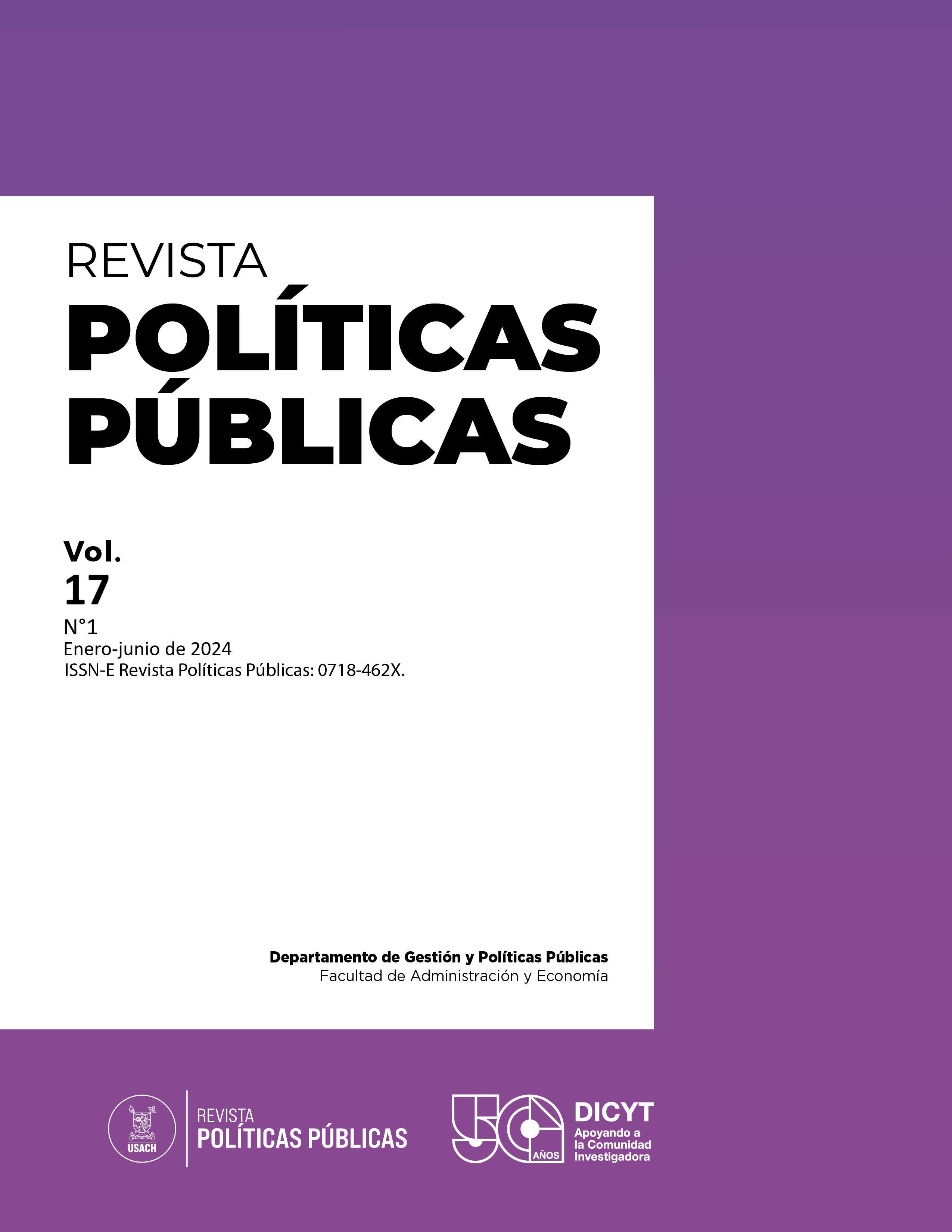Relationship between Implementation of Digital Technologies for Educationand Performance of Benefited Students from Projects of Enlaces Innovation Center 2016-2019
Keywords:
digital technologies, difference in differences, school attendance, school attainmentAbstract
This research explores the impact of information and communication technology projects on student performance, considering both attendance and grades. The analyzed programs include “Mi Taller Digital”, “Iluminación Wifi” y “Tecnologías de Acceso Universal para la Educación”. Employing a quantitative, quasi-experimental, and longitudinal methodology, we apply Difference-in-Differences analysis with staggered treatments. We aim to understand the scope of these technologies in teaching and learning processes, focusing on attendance and annual grade averages. This study contributes to the understanding of the influence of digital technologies in education.
Downloads
References
Sunkel, Guillermo; Trucco, Daniela; Espejo, Andrés. (2013). La integración de las tecnologías digitales en las escuelas de América Latina y el Caribe, una mirada multidimensional. https://repositorio.cepal.org/bitstream/handle/11362/21681/S2013023_es.pdf
Muñoz, Roberto E., y Ortega, Jorge A. (2015). ¿Tienen la banda ancha y las TIC un impacto positivo sobre el rendimiento escolar? Evidencia para Chile. El trimestre económico, 82(325), 53-87. http://www.scielo.org.mx/scielo.php?script=sci_arttext&pid=S2448-718X2015000100053&lng=es&tlng=es
Claro, Magdalena. (2010). Impacto de las TIC en los aprendizajes de los estudiantes: estado del arte. CEPAL - Colección Documentos de proyectos. https://repositorio.cepal.org/bitstream/handle/11362/3781/lcw339.pdf?sequence=1&isAllowed=y
Hinostroza, Juan E.; Labbé, Christian. (2011). Políticas y prácticas de informática educativa en América Latina y el Caribe. Serie Políticas sociales. https://repositorio.cepal.org/bitstream/handle/11362/6182/S2011014_es.pdf?sequence=1&isAllowed=y
Belo, Rodrigo; Ferreira, Pedro; Telang, Rahul. (2013). Broadband in School: Impact on student performance. Management Science 60(2): 265-282. https://doi.org/10.1287/mnsc.2013.1770
Dupont, Julien; Dominique Guellec y Joaquim Oliveira Martins. (2011). OECD Productivity Growth in the 2000s: A Descriptive Analysis of the Impact of Sectoral Effects and Innovation. OECD Journal: Economic Studies, 2011(1). http://dx.doi.org/10.1787/eco_studies-2011-5kgf3281fmtc
UNESCO. (2021a). Reimaginar juntos nuestros futuros: un nuevo contrato social para la educación. Comisión Internacional sobre los Futuros de la Educación. UNESCO. https://unesdoc.unesco.org/ark:/48223/pf0000379381_spa
UNESCO. (2021b). The rewired global declaration on connectivity for education. https://unesdoc.unesco.org/ark:/48223/pf0000380598/PDF/380598eng.pdf.multi
Toro, Pablo. (2010). Enlaces: contexto, historia y memoria. En Enlaces, Centro de Educación y Tecnología del Ministerio de Educación (Ed). El libro abierto de la Informática Educativa. Lecciones y desafíos de la Red Enlaces. (37-50). Santiago de Chile.
Hawkins,Robert J.; Trucano,Michael; Cobo Romani,Juan Cristobal; Twinomugisha, Alex; Sanchez Ciarrusta, Inaki Alejandro. (2022). Reimagining Human Connections: Technology and Innovation in Education at the World Bank (English). Washington, D.C. World Bank Group. http://documents.worldbank.org/curated/en/829491606860379513/Reimagining-Human-Connections-Technology-and-Innovation-in-Education-at-the-World-Bank
Haddad, Wadi: Draxler, Alexandra. (Ed). (2002). Technologies for education: potentials, parameters, and prospects. París. https://unesdoc.unesco.org/ark:/48223/pf0000119129/PDF/119129eng.pdf.multi
Unión Internacional de Telecomunicaciones [ITU]. (2022). Internet surge slows, leaving 2.7 billion people offline in 2022. https://www.itu.int/en/mediacentre/Pages/PR-2022-09-16-Internet-surge-slows.aspx
Melo, Gioia; Machado, Alina; Miranda, Alfonso.. (2017). El impacto en el aprendizaje del programa Una Laptop por Niño. La evidencia de Uruguay. El Trimestre Económico, 84(2), num. 334: 383-409. http://dx.doi.org/10.20430/ete.v84i334.305
Imbens, G. W., & Wooldridge, J. M. (2009). Recent Developments in the Econometrics of Program Evaluation. Journal of Economic Literature, 47(1), 5–86. doi:10.1257/jel.47.1.5
Coca-Perraillón, Marcelo; Lindrooth, Richard; Welton, John. (2019). Difference-in-Difference Research Designs. Nursing Economics, 37(6), 328-331.https://link.gale.com/apps/doc/A610341387/AONE?u=anon~4cdc5165&sid=googleScholar&xid=365428d4
Wing, Coady; Kosali, Simon; Bello-Gomez, Ricardo. (2018). Designing Difference in Difference Studies: Best Practices for Public Health Policy Research. Annual Review of Public Health, 39, 453-469. https://www.annualreviews.org/doi/pdf/10.1146/annurev-publhealth-040617-013507
Callaway, Brantly; Sant'Anna, Pedro. (2021). Difference-in-Differences with multiple time periods. Journal of Econometrics. 225 (2). (200 - 230). https://doi.org/10.1016/j.jeconom.2020.12.001
Bellei, Cristián. (2010) Evolución de las políticas educacionales en Chile (1980 - 2009). En Enlaces, Centro de Educación y Tecnología del Ministerio de Educación (Ed). El libro abierto de la Informática Educativa. Lecciones y desafíos de la Red Enlaces. (14-36). Santiago de Chile.



